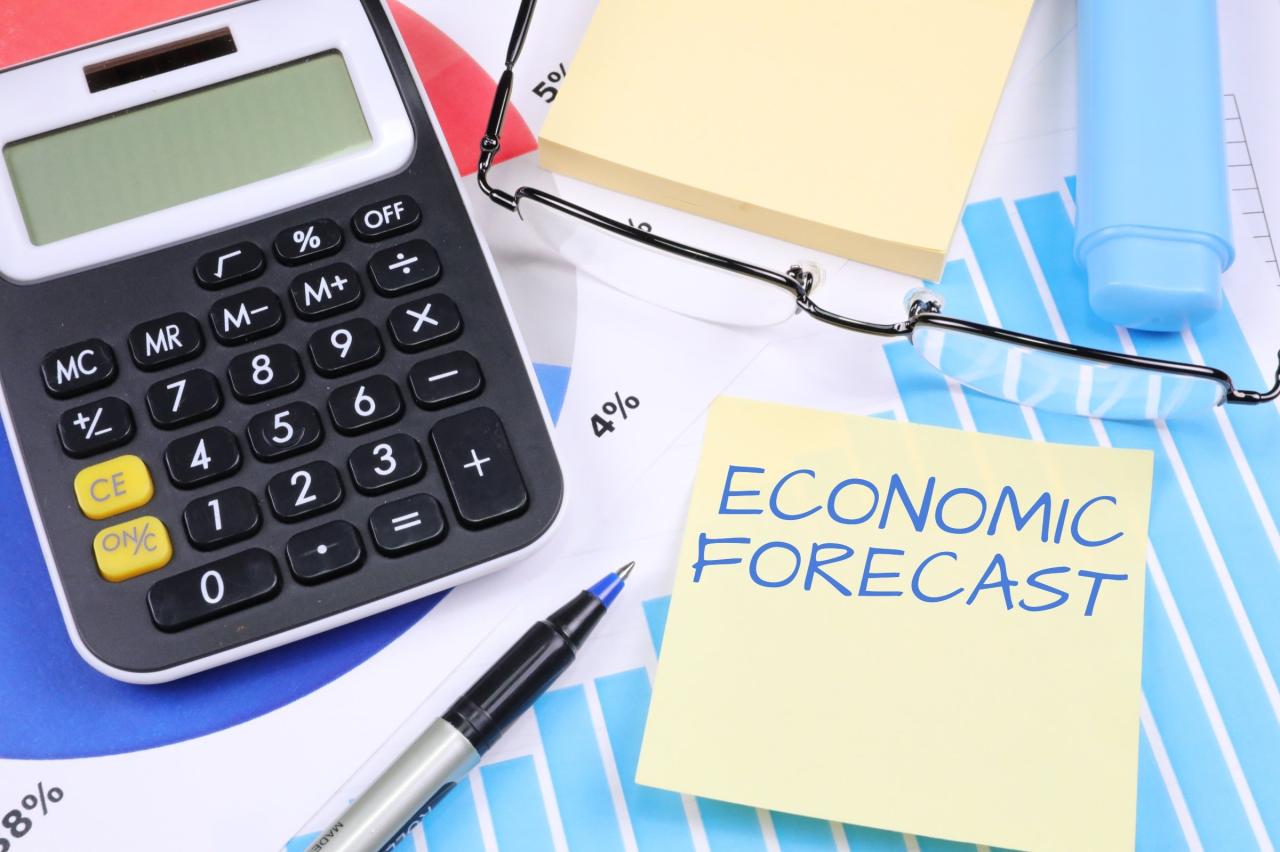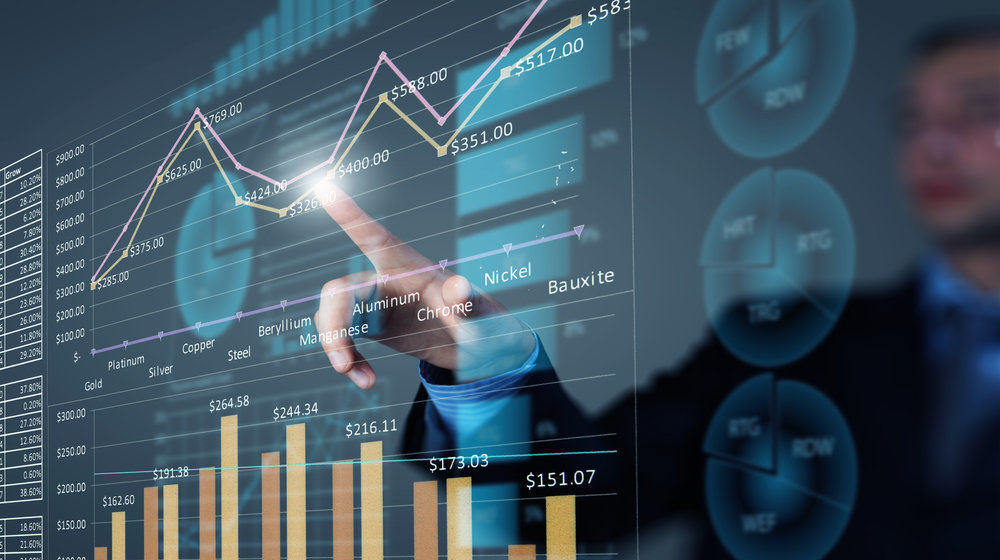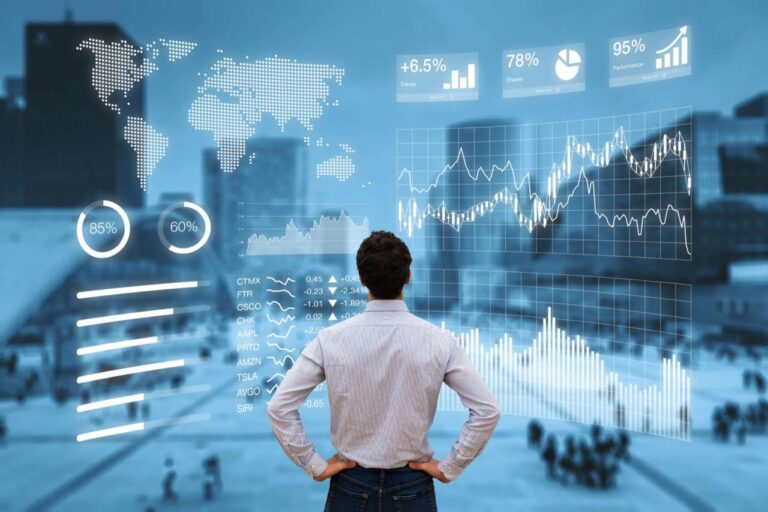In an increasingly interconnected world, understanding economic forecasts is paramount for individuals, businesses, and policymakers alike. These projections, far from being mere academic exercises, influence everything from investment decisions and employment opportunities to government policies and consumer spending habits. The global economy is a complex, dynamic system, constantly buffeted by a myriad of forces – geopolitical tensions, technological breakthroughs, shifts in consumer behavior, and environmental challenges. To truly grasp the implications of these forces, we must unpack economic forecasts, dissecting the methodologies, key indicators, and the potential impact of various scenarios. This comprehensive guide will delve into the intricacies of economic prediction, offering actionable insights for navigating a future shaped by powerful financial currents. Whether you’re an investor, a business owner, a policymaker, or simply a concerned citizen in Indonesia or beyond, preparing to make informed decisions requires a robust understanding of the economic road ahead.
The Art and Science of Economic Forecasting

Economic forecasting is not an exact science, but rather a blend of quantitative analysis, qualitative judgment, and historical patterns. It involves anticipating the direction of the economy based on available data and various models.
A. Key Economic Indicators
Forecasters rely on a vast array of economic indicators to gauge the health and direction of an economy. These are essentially snapshots of economic activity.
- A. Gross Domestic Product (GDP): The total value of goods and services produced in a country over a specific period. It’s the primary measure of economic activity and growth. Forecasts often project GDP growth rates.
- B. Inflation Rates: The rate at which the general level of prices for goods and services is rising, and subsequently, purchasing power is falling. Measured by indices like the Consumer Price Index (CPI) or Producer Price Index (PPI). High inflation erodes purchasing power.
- C. Employment Data: Includes unemployment rates, non-farm payrolls, wage growth, and labor force participation rates. Strong employment signals a healthy economy and consumer spending.
- D. Interest Rates: Set by central banks (e.g., Bank Indonesia, the Federal Reserve in the US). They influence borrowing costs for consumers and businesses, impacting investment and consumption. Forecasts often predict central bank policy moves.
- E. Consumer Spending/Confidence: Measures of how much consumers are spending and their outlook on the economy. Consumer spending is a major component of GDP.
- F. Business Investment: Capital expenditure by businesses on equipment, technology, and expansion. Indicates future productive capacity and economic confidence.
B. Forecasting Methodologies
Economists use various approaches to generate forecasts, often combining several methods for a more robust outlook.
- A. Econometric Models: Statistical models that use historical data to identify relationships between economic variables. They can be highly complex, involving multiple equations.
- B. Leading Indicators: Economic variables that tend to change before the economy as a whole. Examples include consumer confidence, new building permits, and stock market performance.
- C. Survey Data: Polling businesses and consumers about their future plans and expectations (e.g., purchasing managers’ indices, consumer sentiment surveys).
- D. Qualitative Analysis: Incorporating expert judgment, geopolitical considerations, policy shifts, and unforeseen events that are difficult to quantify.
- E. Scenario Planning: Developing multiple possible future scenarios (e.g., optimistic, pessimistic, base case) rather than a single point forecast, acknowledging uncertainty.
C. Understanding Forecast Limitations
It’s crucial to approach economic forecasts with a healthy dose of skepticism and understand their inherent limitations.
- A. Unpredictable Shocks: Major unforeseen events (e.g., pandemics, natural disasters, sudden geopolitical conflicts, supply chain disruptions) can rapidly alter economic trajectories.
- B. Data Lags and Revisions: Economic data is often released with a lag and is subject to revisions, meaning forecasters are often working with incomplete or slightly outdated information.
- C. Behavioral Factors: Human behavior, sentiment, and confidence are notoriously difficult to predict and can lead to self-fulfilling prophecies or irrational market movements.
- D. Model Assumptions: All models rely on assumptions, and if these assumptions prove incorrect, the forecast will be inaccurate.
- E. Political and Policy Changes: Sudden shifts in government policy or political stability can have profound and unpredictable economic consequences.
Global Economic Currents
The world economy is a mosaic of interconnected markets. Understanding the major global forces is essential for interpreting localized forecasts.
A. Central Bank Policies and Interest Rates
Central banks globally (like Bank Indonesia, the US Federal Reserve, European Central Bank) play a pivotal role in managing economies through monetary policy, primarily by setting interest rates.
- A. Inflation Targeting: Many central banks aim to keep inflation at a stable, low level (e.g., around 2%). If inflation rises, they may increase interest rates to cool the economy.
- B. Economic Stimulus/Tightening: Lower interest rates stimulate borrowing and investment; higher rates slow them down. Forecasts often hinge on whether central banks are in a “tightening” (raising rates) or “loosening” (cutting rates) cycle.
- C. Quantitative Easing/Tightening: Large-scale asset purchases (QE) inject liquidity into the system; quantitative tightening (QT) withdraws it, impacting bond yields and market liquidity.
B. Geopolitical Tensions and Trade Wars
Political instability and trade disputes can have far-reaching economic consequences.
- A. Supply Chain Disruptions: Conflicts or sanctions can disrupt global supply chains, leading to shortages and inflation.
- B. Investment Uncertainty: Geopolitical instability deters foreign direct investment (FDI) and can lead to capital flight.
- C. Trade Barriers: Tariffs and trade wars increase costs for businesses and consumers, reduce trade volumes, and can slow global growth.
- D. Energy Prices: Geopolitical events often impact global energy supplies and prices, with significant ripple effects across all economies.
C. Technological Innovation and Disruption
Rapid technological advancements are a double-edged sword: driving growth but also causing disruption.
- A. Productivity Gains: New technologies (AI, automation, biotechnology) can boost productivity, leading to economic growth and higher living standards.
- B. Job Displacement: Automation and AI can displace workers in certain sectors, requiring retraining and adaptation of labor markets.
- C. New Industries and Markets: The emergence of entirely new industries (e.g., blockchain, green energy) creates new economic opportunities.
- D. Cybersecurity Risks: Increased reliance on digital infrastructure also means heightened risks from cyberattacks, which can have significant economic costs.
D. Demographic Shifts and Labor Markets
Changes in population structure significantly impact economic forecasts.
- A. Aging Populations: In many developed and even some developing countries (e.g., Japan, Europe, increasingly China), aging populations can strain social security systems, reduce labor force participation, and shift consumption patterns.
- B. Youth Bulges: Countries with large young populations (e.g., parts of Africa, India, and some regions in Indonesia) face challenges of job creation but also offer significant growth potential if human capital is developed.
- C. Migration: Can alleviate labor shortages in some regions but also create social and economic challenges in others.
E. Climate Change and Environmental Policy
The escalating impact of climate change and responses to it are increasingly central to economic forecasts.
- A. Physical Risks: Extreme weather events, sea-level rise, and resource scarcity can damage infrastructure, disrupt agriculture, and lead to economic losses.
- B. Transition Risks: Policies aimed at decarbonization (e.g., carbon taxes, renewable energy subsidies) will impact industries reliant on fossil fuels but create opportunities in green technologies.
- C. Investment in Green Economy: Massive investments are needed for renewable energy, sustainable infrastructure, and climate adaptation, driving new economic sectors.
The 2025-2026 Global Economic Outlook

While specific forecasts are constantly updated by institutions like the IMF, World Bank, and central banks, we can unpack some general themes for 2025-2026, considering the current global context (as of mid-2025).
A. Inflationary Pressures
After a period of elevated inflation, central banks have been actively raising interest rates.
- A. Demand-Side Factors: Strong consumer demand and tight labor markets could keep some inflationary pressure.
- B. Supply-Side Resolution: Easing supply chain bottlenecks and stabilizing energy prices are expected to moderate inflation from peak levels.
- C. Wage-Price Spiral Risk: The ongoing concern is whether sustained wage growth could create a “wage-price spiral,” making inflation stickier.
- D. Policy Challenge: Central banks face the delicate balancing act of taming inflation without triggering a severe recession.
B. Economic Growth
Many forecasts point to a moderation in global growth compared to post-pandemic recovery highs.
- A. Higher Interest Rates Impact: The lagged effects of higher interest rates are expected to dampen consumer spending and business investment.
- B. Regional Divergence: Growth trajectories are likely to vary significantly by region. Emerging markets, including Indonesia, may show more resilience due to strong domestic demand, while major developed economies might face stronger headwinds.
- C. China’s Role: China’s economic performance (e.g., recovery from real estate challenges, consumer confidence) will significantly impact global growth, especially for commodity-exporting nations and supply chains.
C. Labor Markets
Labor markets globally have shown remarkable resilience, but forecasts suggest a potential cooling.
- A. Demand-Supply Rebalancing: Higher interest rates and slower economic growth are expected to reduce labor demand.
- B. Wage Growth: Wage growth might moderate but remain above historical averages in some sectors due to persistent labor shortages.
- C. Unemployment: A slight uptick in unemployment rates is generally expected as economies slow, but a sharp rise is hopefully avoided for a “soft landing” scenario.
D. Geopolitical Risks
Geopolitical tensions are likely to remain a significant source of uncertainty.
- A. Regional Conflicts: Ongoing conflicts in Eastern Europe, the Middle East, or potential flashpoints in Asia can trigger new supply shocks, energy price volatility, and investment risks.
- B. Trade Protectionism: The trend towards trade protectionism and “friend-shoring” (realigning supply chains with geopolitical allies) could continue, impacting global trade flows and efficiency.
- C. Cybersecurity Threats: State-sponsored cyberattacks or large-scale data breaches could disrupt financial systems and critical infrastructure.
E. Technology’s Accelerating Impact
The influence of AI, automation, and digital transformation will continue to be a major theme.
- A. AI Integration: Rapid adoption of Artificial Intelligence across industries could boost productivity but also raise questions about future labor market needs.
- B. Green Transition: Investment in renewable energy and sustainable technologies will continue to grow, creating new economic sectors and jobs.
- C. Digital Currency Evolution: The development and potential rollout of Central Bank Digital Currencies (CBDCs) could reshape payment systems globally.
Implications for Individuals, Businesses, and Policymakers
Understanding these forecasts allows for proactive decision-making.
A. For Individuals:
- A. Personal Finance Resilience: Build robust emergency funds to withstand potential economic slowdowns or job market shifts.
- B. Debt Management: Prioritize paying down high-interest debt, especially if interest rates remain elevated.
- C. Smart Investing:
- Diversify: Don’t put all your investments in one basket. Consider global markets, not just local ones.
- Long-Term View: Despite volatility, maintain a long-term investment horizon for growth assets (stocks).
- Inflation-Proofing: Explore assets that traditionally perform well during inflationary periods (e.g., real estate, commodities, certain types of stocks).
- D. Skill Development: Invest in acquiring new skills that are in demand in a changing labor market, particularly those resilient to automation.
- E. Budgeting: Continue meticulous budgeting to manage spending and maximize savings in a potentially tighter economic environment.
B. For Businesses:
- A. Supply Chain Resilience: Diversify supply chains and consider “de-risking” strategies (e.g., near-shoring, friend-shoring) to mitigate geopolitical and logistical disruptions.
- B. Cost Management: Focus on efficiency and cost control in a potentially slower growth environment.
- C. Digital Transformation: Accelerate adoption of automation and AI to boost productivity and reduce operational costs.
- D. Market Diversification: Explore new export markets and reduce over-reliance on a single domestic or international market.
- E. Talent Management: Invest in reskilling and upskilling your workforce to adapt to technological changes and labor market shifts.
- F. Access to Capital: Be mindful of higher borrowing costs if interest rates remain elevated; explore alternative financing if needed.
C. For Policymakers:
- A. Balancing Inflation and Growth: Calibrate monetary and fiscal policies carefully to manage inflation while supporting sustainable economic growth.
- B. Structural Reforms: Implement reforms to improve productivity, attract foreign investment, and enhance the competitiveness of the Indonesian economy.
- C. Human Capital Development: Invest heavily in education, vocational training, and skills development to prepare the workforce for the future economy.
- D. Infrastructure Investment: Continue to invest in critical infrastructure to improve connectivity, reduce logistics costs, and support economic activity.
- E. Climate Resilience: Develop and implement policies to address climate change risks and promote a green economy transition, unlocking new investment opportunities.
- F. Regulatory Clarity for Digital Assets: Provide clear and consistent regulatory frameworks for the burgeoning digital asset space to foster innovation while protecting consumers.
Conclusion
Economic forecasts serve as invaluable compasses in a complex global landscape, offering a glimpse into potential future trends and challenges. While inherent uncertainties mean no prediction is absolute, understanding the underlying indicators, forecasting methodologies, and major global influences allows for a more informed perspective. For individuals and businesses in Indonesia and across the globe, unpacking these insights means proactively building financial resilience, optimizing investment strategies, fostering innovation, and adapting to a rapidly evolving world. By staying informed and making deliberate choices, we can not only weather economic shifts but also strategically position ourselves to thrive amidst the unfolding global economic narrative. The future is dynamic; our understanding of it must be too.



